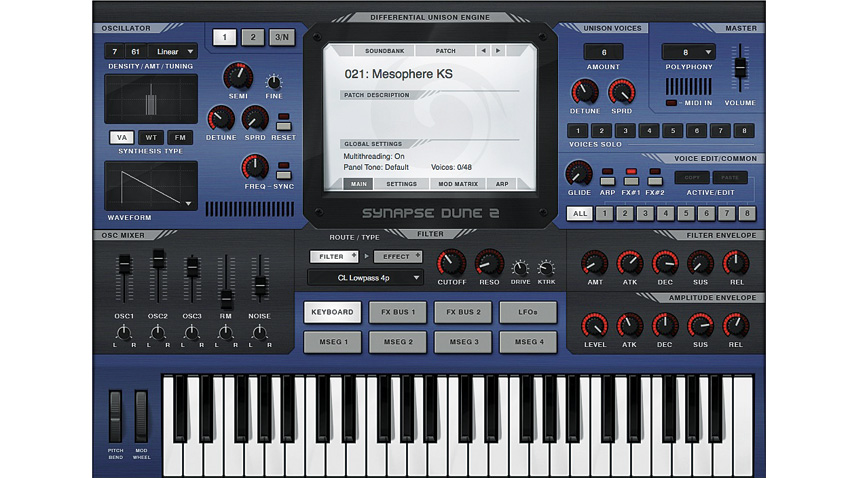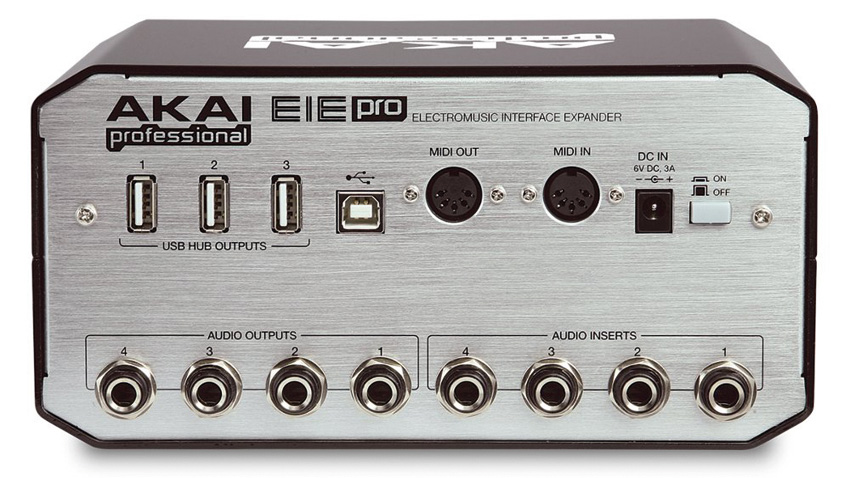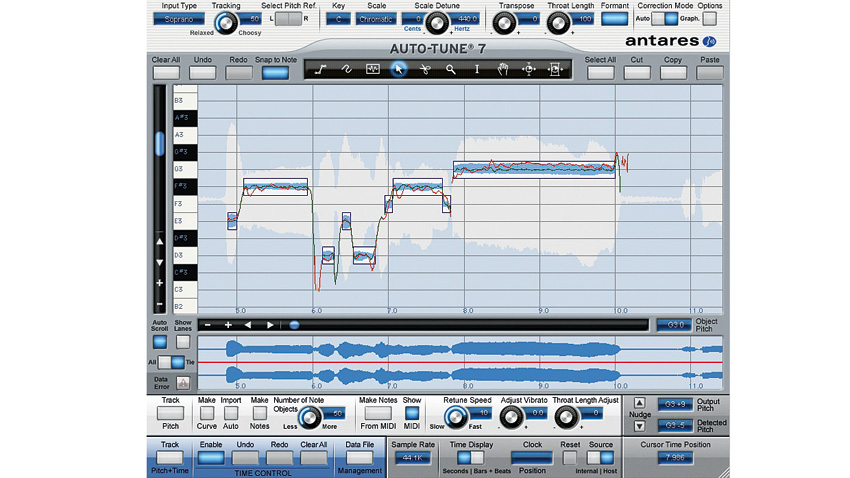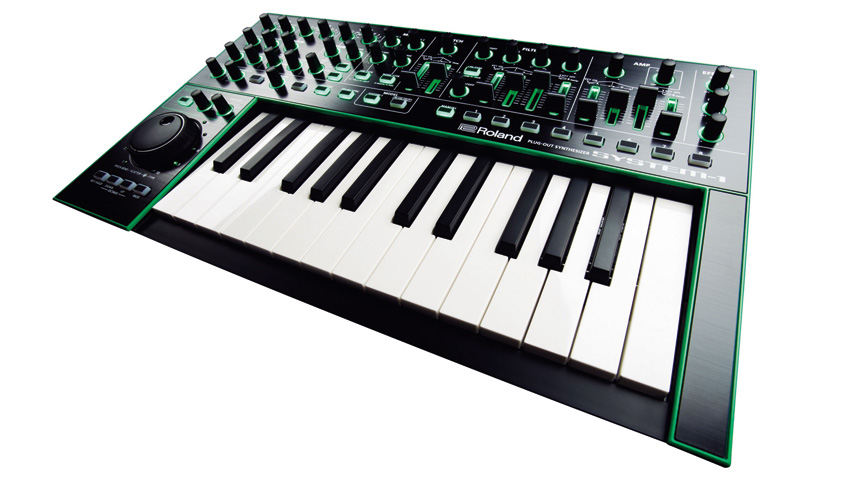The A to Z of computer music: U and V
Two letters for the price of one!

Vexed by virtual analogues? Unsure about unison? We've got more verified virtual music verbosity for the undereducated...
Unbalanced
An unbalanced audio signal is one in which the ground component is carried on the same physical connection (wire or input/output socket) as one of the two audio components, resulting in a lower construction cost than a balanced connection (in which the ground gets its own dedicated carrier), but also a lower signal level and greater susceptibility to interference (background noise). For that reason, balanced cables and circuitry are generally prefereable for music production, particularly with regard to microphones, mixer and audio interface I/O, and monitor connections.

Unison
A feature of many synthesisers, unison is the activating of multiple voices (usually up to eight, but sometimes going higher) or oscillators, all playing together but slightly offset from a centre frequency and each other, with a Detune control for shifting them away from it even further, and possibly a Spread control for spacing them out across the stereo panorama. The end result is a much thicker, richer sound than that of a single oscillator. Perhaps the most recognisable example of unison in action is the Roland JP-8000 super-saw oscillator as heard in many trance tracks.
Unity Gain
The gain level at which a device makes no change to the volume of a signal passing through it. For example, if a sine wave enters a mixer input at -3dB and the mixer channel is set to unity gain (the Gain knob and/or level fader set to 0dB), the sine wave will hit the mixer output at -3dB. With every stage of a device chain set to unity gain, background noise is (theoretically) minimised.
Update/upgrade
One of the best things about the software-based music studio is that developers can improve their applications and plugins by releasing downloadable updates and upgrades for them. The terminology is not set in stone, but generally, an update is a free 'point release' (eg, v1.0 to v1.1) that makes minor enhancements without redesigning the UI or introducing major new features, while an upgrade steps up a full version number (2.6 to 3.0, say) and makes much more profound changes - all the way up to a full architectural/conceptual redesign, even, possibly dropping support for older operating systems and/or hardware in the process. Paying to make the jump from an entry level product to its higher-end 'parent' is also an upgrade - Cubase Artist 7 to Cubase 7, for example.
The line between update and upgrade has become increasingly blurred of late, with an increasing number of developers - most notably Steinberg and Cakewalk - now charging for some point releases, albeit significantly less than for full version upgrades.

USB
Universal Serial Bus. The market-leading connectivity standard for Mac and PC peripherals, most relevant to musicians with regard to audio interfaces, MIDI keyboards and controllers, external hard drives and software authorisation dongles. The USB specification is now at version 3 (offering an impressive 5Gbit/s of data transfer), but audio interface manufacturers seem to be happy to stick with USB 2 (much slower at just 480Mbit/s, but cheaper to license and build) for most of their releases, with high-end models eschewing USB 3 in favour of FireWire and Thunderbolt. MIDI devices, meanwhile, shuttle such small amounts of data around that USB 2 is more than fast enough for even the most intense usage.
Want all the hottest music and gear news, reviews, deals, features and more, direct to your inbox? Sign up here.
Valve/Vacuum Tube
A voltage-controlled amplifier component used in analogue mixers, preamps and other devices, and emulated in all manner of music software.
VCO
Voltage Controlled Oscillator. An electronic oscillator, the frequency of which is controlled by a variable voltage applied to its input. In an analogue synth, each key sends out the required voltage to set the oscillator frequency to the pitch of that note. In virtual analogue hardware and soft synths, though, the term VCO is really only used for familiarity, as they are, of course, not actually controlled by electronic voltages.
Velocity
A MIDI message that converts the force or speed with which a keyboard key, drum pad, etc is struck to a numeric value from 0-127. Velocity is most commonly used to control the volume of a synth or sampler (so pressing a key or striking a pad harder results in a louder sound, just like an acoustic piano or drum), but - like all MIDI data - it can be assigned to modulate other things too, such as filter cutoff, pitch, envelope depth, etc.
An important setting on most hardware MIDI instruments and certain soft synths/samplers is the velocity curve, which maps the input velocity to the output volume (or other parameter) level, enabling the instrument to be adapted to the user's playing style. Light-fingered keyboardists, for example, might set the curve so that medium velocity strokes trigger higher volume levels than the default 1:1 (linear) mapping.

Vibrato
The 'wobbling' in pitch of a sustained sound. Vibrato is applied in a synth or sampler by assigning an LFO to the oscillator or sample pitch parameter. Some effects make a headline feature of their ability to add/remove/adjust natural-sounding vibrato in vocal parts in particular, most famously Antares Auto-Tune and Celemony Melodyne.

Virtual Analogue
A virtual analogue synthesiser is a digital synth that models the behaviour - and so the sound - of an analogue one. Despite the word 'virtual', there are plenty of hardware VAs out there as well as software ones, including classics like the Access Virus and Novation SuperNova, and newcomers such as Roland's Aira System-1.
Virtual Instrument
A synthesis- or sample-based instrument in software form. Virtual instruments are available in a variety of plugin formats for use in compatible host DAWs (VST, Audio Units, AAX, etc), with many of them also operating standalone - ie, without the need for a host to feed them MIDI input or process and 'present' their audio output.
Vocoder
Invented in the 30s as a system for encoding and decoding speech for encrypted broadcast, the vocoder is now a mainstay of the electronic music studio. It's a highly recognisable audio effect that splits an input 'modulator' signal (usually the human voice) into a number of frequencies using parallel band-pass filters, which are tuned by a pitched 'carrier' signal (generated by an analogue synthesiser), thus imposing the character of the former onto the latter, resulting in the 'singing robot' effect. While synth and voice make the classic vocoder combination, software vocoders enable any sources you like to be used for either or both.
Voice
Each individual note played back by a synth or sampler (either triggered directly or as part of a unison 'stack') is called a voice, and while the number that can be active simultaneously in today's ultra-powerful software and hardware instruments is immense (limited only by the power of the host computer in many cases!), polyphony - as the maximum number of voices available to an instrument is known - used to be a serious consideration, with early polyphonic analogue synths such as the five-voice Sequential Circuits Prophet-5 commanding hefty prices.
VST
Virtual Studio Technology. Invented by Steinberg in 1996 (initially only for effects; instruments were added in 1999), VST is a software protocol and SDK that enables developers and users to build and deploy virtual effects and instruments as plugins within any VST-compatible DAW or audio editor - which is the vast majority of them.
Today, VST plugins represent the most active area of development in the music tech industry, with countless amazing virtual instruments and effects already on the market and more arriving every month, from classic synths and outboard emulations to mind-bending devices without real-world equivalents. Being software, VST plugins are usually much cheaper to buy than their hardware equivalents, and many of them are free - including those in the ever-expanding Plugins suite, the entirety of which is yours for free whenever you buy the latest issue of .
VU
A VU (Volume Unit) meter is an analogue level meter using particular (decidedly non-linear) ballistics to represent the perceived loudness of a signal rather than its absolute level at any moment in time (for which peak programme meters are best). Many software effects feature virtual VU meters (often alongside PPMs) for level monitoring, and there are even dedicated VU metering plugins available (see right).
Computer Music magazine is the world’s best selling publication dedicated solely to making great music with your Mac or PC computer. Each issue it brings its lucky readers the best in cutting-edge tutorials, need-to-know, expert software reviews and even all the tools you actually need to make great music today, courtesy of our legendary CM Plugin Suite.
